Take Me to the River
By: ajcarapella
By Lesley Adams, Senior Organizer, Western U.S., and Kate Hudson, Advocacy Coordinator, Western U.S.
Photos by Jason Houston
Inspired by the leadership of Alamosa Riverkeeper Cindy Medina, a community united to bring the Alamosa River back to life.
The San Luis Valley and the headwaters of the Alamosa River rest between the snow-capped peaks of the Sangre de Cristo and San Juan Mountains of southern Colorado rest. Rising more than 14,000 feet above sea level, the “Blood of Christ” mountains are the southern tip of the Rockies and stretch over the New Mexico border to where the Kapota Ute Indians once lived.
Three centuries ago, Spanish settlers came north from what was then Mexico and settled in the San Luis Valley, where they took root amidst the cottonwood and aspen trees along the Alamosa River and became farmers and ranchers with an unflagging commitment to hard work and their Catholic faith. Cindy Medina, a present-day descendant of one of those families, became one of the first women to join the Waterkeeper movement.
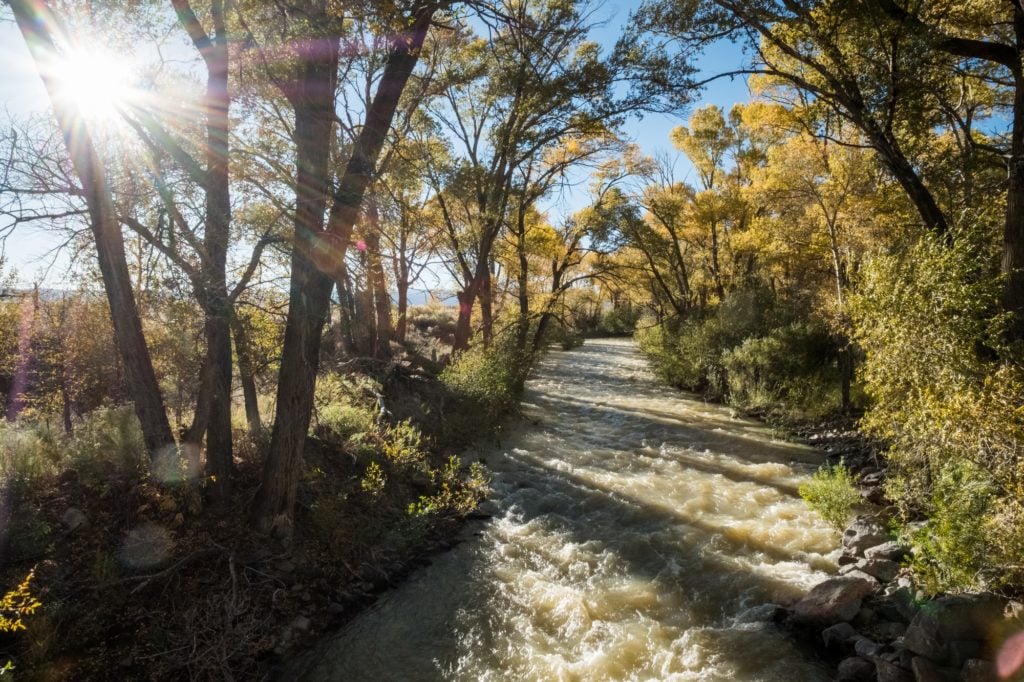
The middle child of seven girls, Cindy was raised on a farm, helping with chores, playing in alfalfa fields, and splashing around in the irrigation ditch, called an acequia, that brought water to the farm. In her memoir, A Journey into the Heart of the Black Madonna, Cindy wrote lovingly of her family, whose pulsating force sustained her as a girl. Her memories of growing up in the San Luis Valley send aromas through the pages – of fresh tortillas and cinnamon rolls made by her mother, of the home-heating fires fueled by wood gathered in the mountains with her grandfather, of the potent herbal remedies wild-crafted by her grandmother. Her connections to family and the natural world around her were woven together. She wrote: “This lifeblood was no different than the acequia, the ditches lined with dirt that irrigated this arid land with water. . . The acequia was my ocean.”
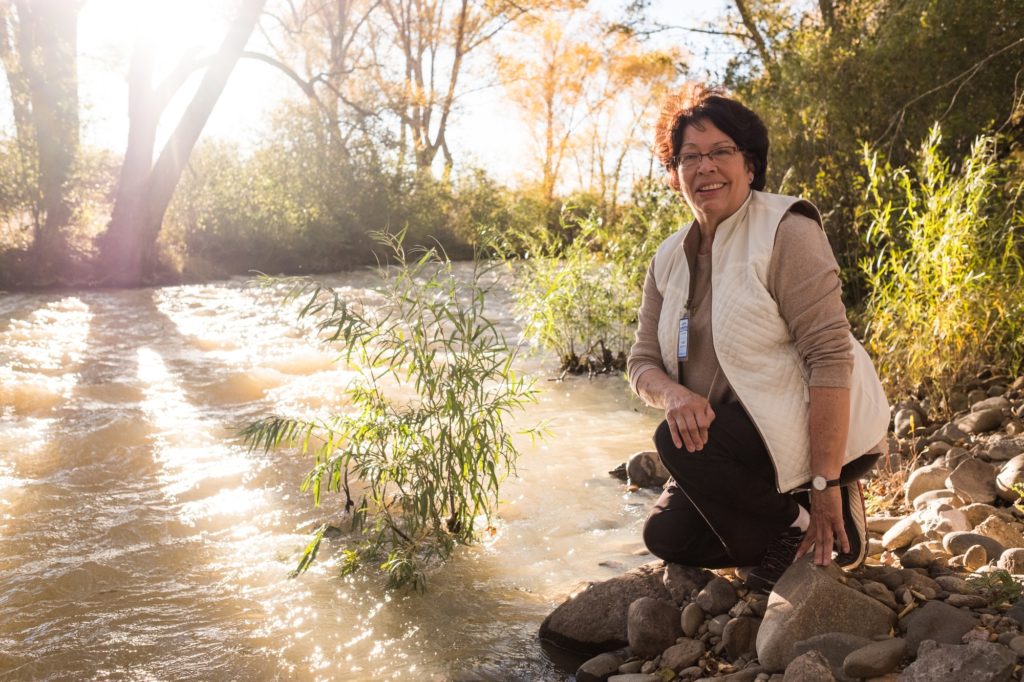
Like many others in the rural West, Cindy left as a young adult to pursue a formal education. She earned a master’s degree in counseling from Arizona State University and relocated with her husband to Seattle. There she began a successful practice as a psychotherapist, gave birth to two daughters and, while on a trip to Zurich, Switzerland to attend a psychology seminar, came across an 8th century statue of the Black Madonna at a Benedictine Abbey and experienced a spiritual transformation that led her to environmental activism. The Black Madonna is considered by some to be the Queen of Nature,” Cindy explains, “and the archetypal energy that fuels change.” She is the mother who fertilizes all life and urgently demands a return to balance and wholeness, honoring the earth. In her memoir, Cindy describes her encounter with the Black Madonna as a spiritual awakening to the interconnectedness of all living things. In 1988, propelled by that journey of self-discovery, Cindy moved back home to southern Colorado, where she found that a pollution crisis threatened the heart of her community, the Alamosa River.
Gold, Greed and Cyanide
The mountains in southern Colorado are rich in minerals, gold and silver, which attracted extensive mining in the late-19th and early-20th centuries. And, in turn, like all boom-and-bust extraction, the mines left a toxic legacy. Acid mine drainage polluted and continues to pollute many Colorado waterways downstream. Mining in high-elevation areas like the San Juan Mountains petered out in the 1920s, and remained dormant for more than half a century, until a new, far more destructive method was developed to allow precious metals to be recovered from otherwise uneconomic ore.
In 1984, Canadian-based Galactic Resources and its subsidiary, Summitville Consolidated Mining Company (named for the local ghost town) acquired 1,230 acres of the San Juan Mountains that loomed above the San Luis Valley, and convinced the state of Colorado to grant them a mining permit for a new “state of the art” mining technique known as “heap leaching” – large-scale open-pit mining that involved slicing off half the side of a mountain and putting the mined ore in a lined open pit (“heap-leach pad”) with sodium cyanide to leach out the copper, gold and silver. This “state of the art” technique was efficient for the mining company, but disastrous for those who lived downstream. The liner of this pit almost immediately sprung leaks, contaminating nearby creeks with heavy metals and acid, and creating a 17-mile dead zone and a massive fish kill in the 51-mile-long Alamosa River.
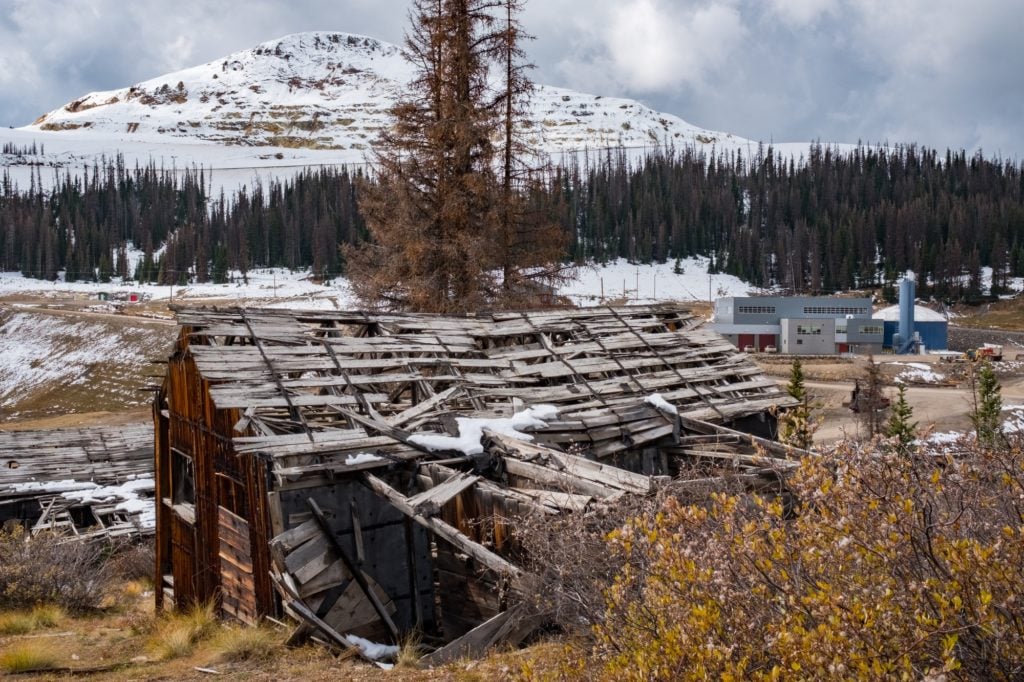
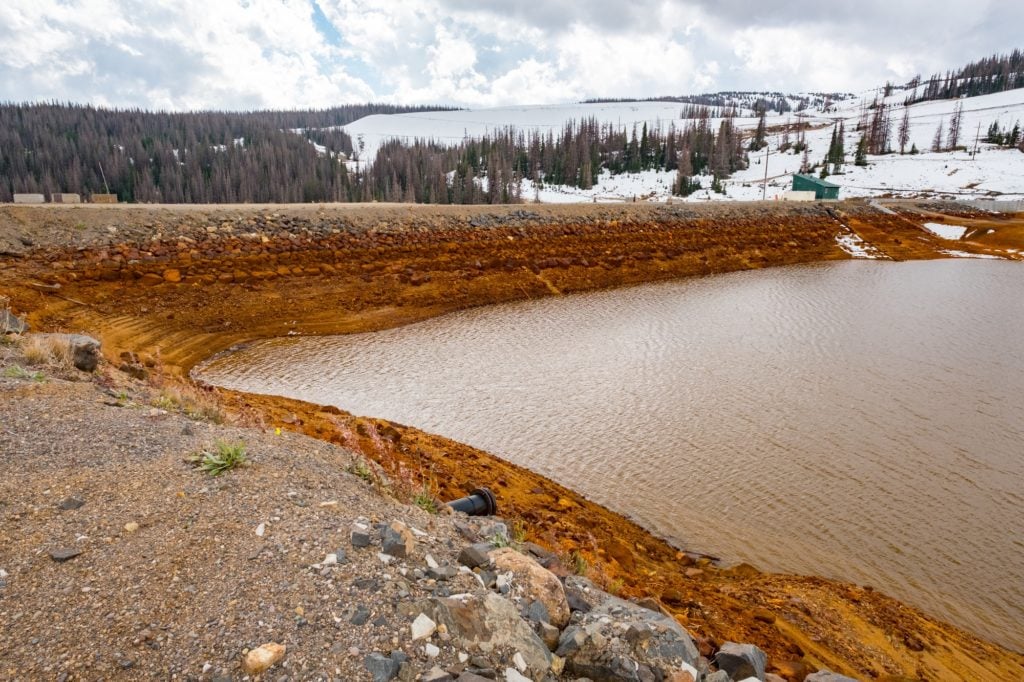
By 1991, Galactic had leached 10 million tons of ore from the Summitville mine, which had already released up to 85,000 gallons of contaminated water. The State of Colorado, concerned about the metal pollution in nearby waters caused by contaminated runoff from the Summitville mine, served Galactic a cease-and-desist order in 1991. In response, the company stopped ore-mining operations in October of that year, but Summitville continued leaching until March 1992. That year, Galactic notified the State of Colorado of their plans to declare bankruptcy effective December 16.
The company left behind 160 million gallons of toxic water in storage ponds, and every minute an estimated 3,000 gallons of contaminated water continued to leak from the site. Summitville is one of hundreds of toxic, inactive mine sites that have drained an acid mix of heavy metals into the headwaters of Western rivers, and as is often the case with mining in the American West, the federal government was forced to assume responsibility for the contamination caused by private industry. It declared Summitville a Superfund site in 1994. Cleanup plans were proposed, rejected, refined and ultimately chosen and implemented over the next decade. Site remediation was conducted until 2013, and monitoring and water-treatment are ongoing, and must continue to ensure long-term protection.
Robert Friedland, the billionaire chairman of Galactic Resources and an international mining financier, eventually paid just $30 million in a legal settlement while $250 million of taxpayer funds have been spent over two decades to detoxify the abandoned site. While Mr. Friedland sat comfortably in Canada, plotting mining ventures in Mongolia, Australia and Myanmar, the rural communities in the San Luis Valley were left to look at a river that had turned bright orange from one of the worst acid-mine releases in U.S. history. And federal and state taxpayers got the bill for the long and painstaking process of designing and carrying out a reclamation plan for Summitville.
Cindy Medina Returns to Her Community
Cindy Medina, back at home with a deepened sense of purpose and spiritual guidance, contemplated how she could contribute to her community. Among other endeavors, she helped found a community center, which offered resources to address domestic violence, provide counseling and develop parenting skills, as well as providing recreation and dance classes. Meanwhile, Cindy watched the chaos from the Summitville mine unfold. “At first, I hesitated,” she recalls. “I thought, How can I contribute to this? I’m not a geologist or a biologist. While meditating on the Black Madonna, I saw her face turn into the dark earth, and farmers planting the soil. I realized how so many people were dependent on the Alamosa River. Then, my childhood memories of playing in the alfalfa fields and swimming in the acequia flooded over me. I was convinced to say that holy yes.” In 1993, five years after her return, she joined the battle to clean up the site. She quickly emerged as a community leader who had the ability to make sure that the interests of the local community were taken seriously in the byzantine world of Superfund hazardous-waste cleanup.
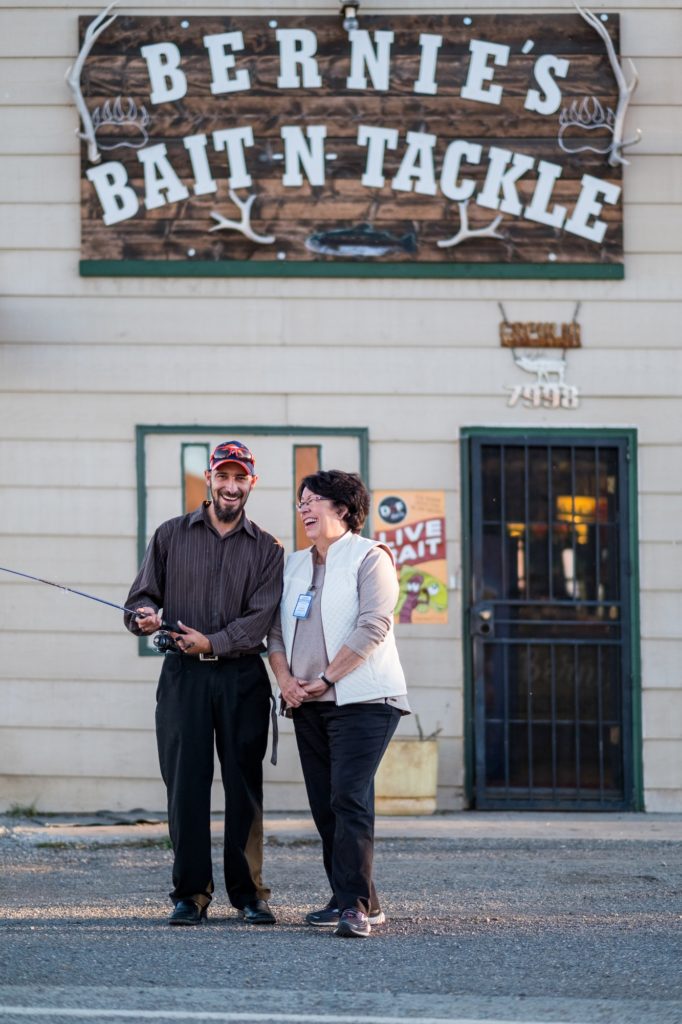
But what about the Alamosa River and the fish? The community still felt betrayed, as if someone had stolen it from them in the dark of night, and neither state nor federal government had protected them. Residents felt that the federal authorities in charge were ignoring the Alamosa and were solely focused on the cleanup of the mine-site. Nor was the state listening to them. So Cindy and other citizens dedicated themselves to helping make sure local communities were heard.
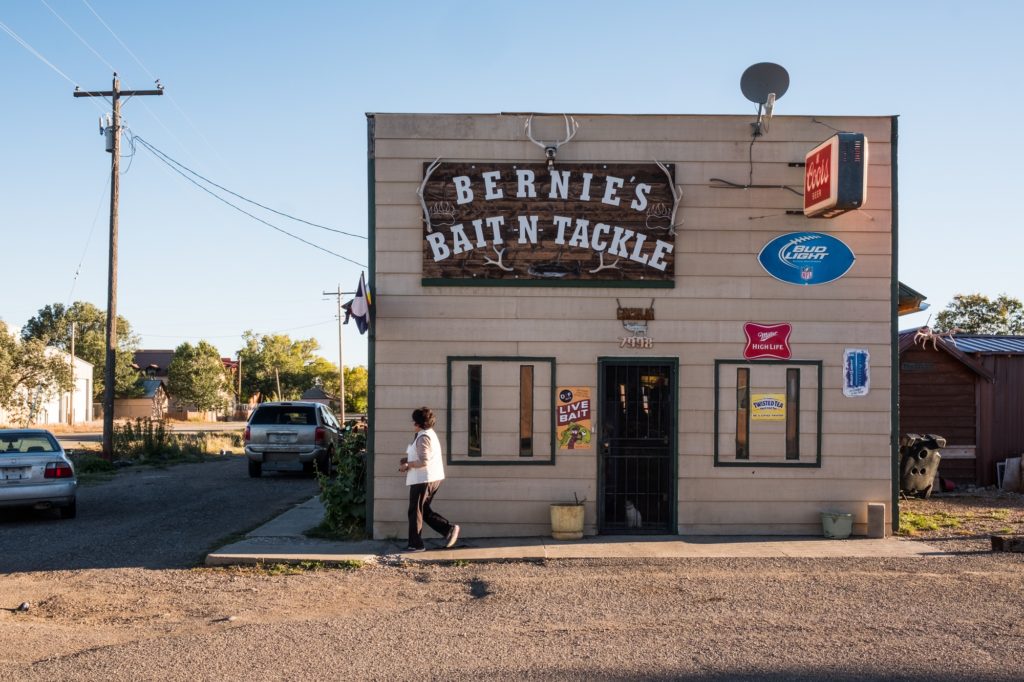
When Robert F. Kennedy, Jr. came in 1998 to speak at a fundraiser for a foundation run by the Catholic Diocese of Pueblo, he met Cindy and her fellow activists, learned of the Summitville mine disaster and encouraged her to apply to Waterkeeper Alliance to become the Alamosa Riverkeeper. She gained approval to take on that role in 1999.
“We felt so isolated trying to fight our local battle,” Cindy remembers. “But once we became a Waterkeeper organization, we felt that we belonged to something bigger, that there were all these other Waterkeepers fighting polluters as well. Bobby was an inspiration. And the movement inspired me because it was very grassroots.”
A critical component of the remediation plan was the construction of a $16 million treatment plant to clean the severely polluted water discharging from the abandoned mine before it traveled downstream to communities and farms. But only after years of state and community lobbying did stimulus funding, provided by the Obama administration, allow the plant to be built. Completed in 2011, it has been critical to improving water downstream by remediating up to 1,600 gallons of toxic discharge per minute, pushing toward the goal of returning the Alamosa to pre-Summitville conditions.
That the river and its fish are finally coming back to life is perhaps even more the result of river-and-watershed restoration work being done independently of site cleanup. This work, spearheaded by Cindy in collaboration with other key community members, was equally impressive because it required parties who often had opposing interests, i.e. advocates for protecting the river and farmers dependent on river water to irrigate their fields, to find common ground. “The mine disaster brought us together in a way that would not have happened otherwise,” Cindy recalls. “We represented different interests, but we needed each other. And so we concentrated on our common interests, rather than what divided us.”
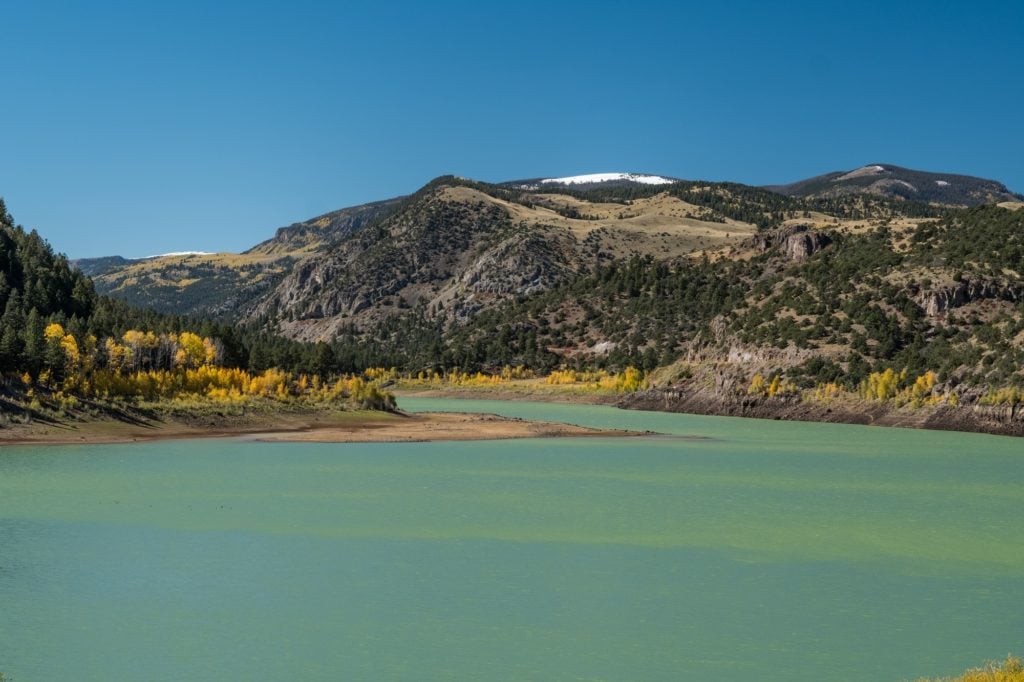
Restoring the River and Healing the Community
Colorado’s Attorney General at the time, Ken Salazar, is a native son of the San Luis Valley and a close friend of Cindy Medina and her family. (He would go on to be Secretary of the Interior in the Obama administration.) Salazar knew many of the victims of the mine disaster. His inspiration and determination led to his office’s filing of the Natural Resource Damages lawsuit against Robert Friedland in 1996, based on a little known and underutilized section of the Comprehensive Environmental Response, Compensation and Liability Act, also known as the Superfund law, that holds a polluter liable not only for the cleanup of the pollution it causes, but also for restoring or replacing all of the natural resources – water, air, fish, wildlife – that have been damaged or destroyed.
As a result of this suit, Friedland was forced to pay $30 million, $5 million of which was earmarked for natural-resource recovery. This finally gave Cindy and her community the financial means to pursue their dream of restoring the Alamosa River and watershed. “Natural resource damages were the key to unlocking the door to restoring the river,” Cindy says.
The goal of the Alamosa River Watershed Restoration Master Plan, completed in July 2005 with significant input from local, state and federal stakeholders, was to ensure that the money recovered from the NRD settlement was used to address the restoration of the watershed. Cindy played an integral role in developing that plan. The restoration projects selected to be funded are succeeding in large part because of the alliances, partnerships and old-fashioned good relationships that Cindy and others have built within the community.
One of the most important of those relationships was Cindy’s partnership with Rod Reinhardt, a local farmer and then-president of Terrace Irrigation Company. They met during public meetings held to support development of the Master Plan and started working together when the Natural Resource trustees sought public input on possible NRD projects.
Ken Salazar had suggested that Cindy and others look into the possibility of using NRD funds to acquire water for the river to increase instream flows to help restore it, because the Alamosa was typically dry downstream of the Terrace Reservoir from late fall through early spring.
When Cindy, Rod, and other community members started discussing possible NRD projects at public meetings, “that’s when the restoration opportunities of instream flow found us,” Cindy says. In 2006, Cindy applied to the trustees for a grant from the Natural Resource Damages fund to purchase instream flows from farmers who owned those water rights for the river, and received $1.2 million to carry out that project in 2007. That was the beginning of a long learning curve on how to combine flow-restoration with mine-remediation and reclamation efforts for the whole watershed.
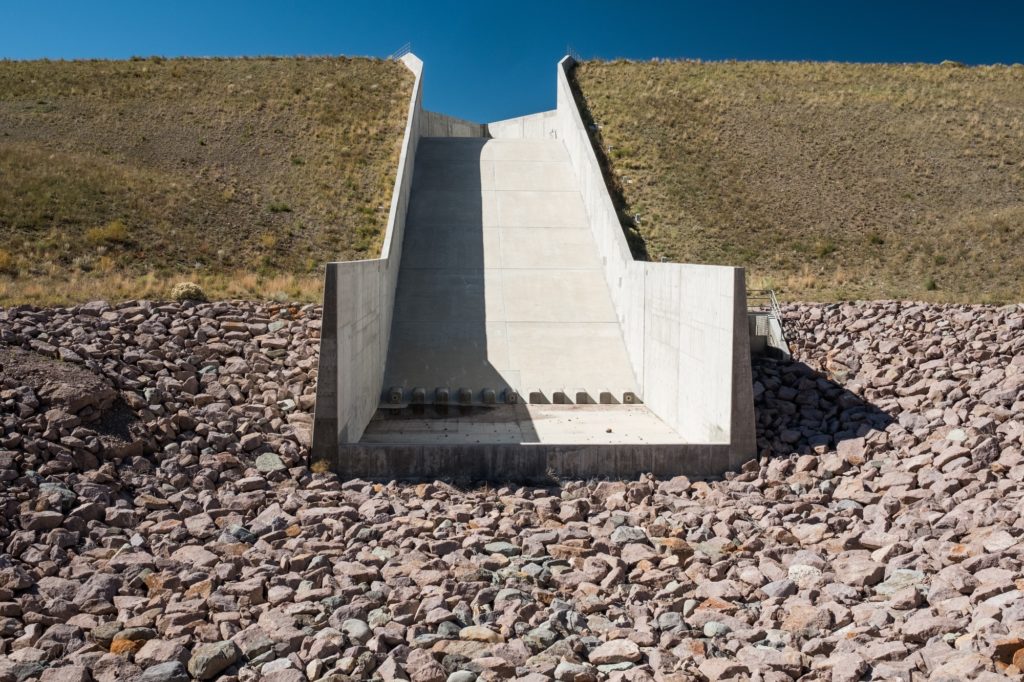
To begin to make her dream of restoring flows to the Alamosa a reality, Cindy had to forge alliances with Rod Reinhardt and other farmers in the valley, to find both the water to purchase and a place to store the water. But because water is scarce in the arid west, farmers jealously guard their water, water rights and irrigation systems. The farming community was initially opposed to the whole concept of selling and retiring agricultural water rights to provide more water for the Alamosa.
Cindy had to convince them that those flows would have irrigation benefits, including re-charge of the aquifer supporting the river and keeping the river bed wetter, allowing it to carry irrigation water more efficiently. Equally important, those extended flows would help restore and support a fishery.
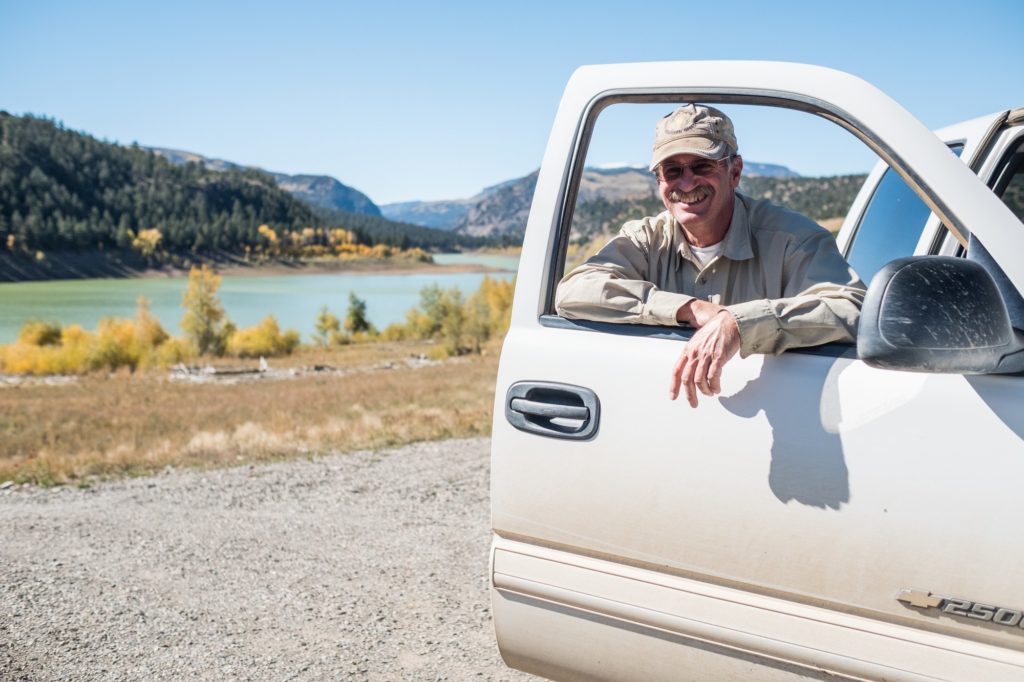
At the time, Reinhardt and the Terrace Irrigation Company needed to find $4 million to replace their reservoir spillway, which was required by the state for safety reasons; without a new spillway, the farming community couldn’t continue to use the reservoir. Increasing the size of the spillway would also increase storage space in the reservoir making it possible for Cindy to use some of that space to store instream-flow water for the Alamosa until it would be released at the end of October.
That proved the key. Cindy, Reinhardt and other project members like Joe McCann, collaborated in finding the funding for the spillway in exchange for instream-flow storage space. Jointly the spillway project was funded by the Rio Grande Basin Roundtable, Terrace Irrigation Company, and Colorado Water Conservation Board. An agreement was developed between Alamosa Riverkeeper and Terrace Irrigation Company, who donated the 2,000 acre-feet of storage in Terrace Reservoir as an in-kind contribution. “We represented different interests, but we needed each other,” says Cindy of their work together. The result was an unprecedented partnership with the farmers who are shareholders in the Terrace Irrigation Company, and who depend on the waters in the Terrace Reservoir, fed by the Alamosa River, to water their crops.
“Cindy brokered the deal with the state. She did it all,” says Reinhardt. Cindy counters, “A project of this magnitude required a collaborative effort with many people and organizations. We’ve been working together for 10 years now.” She adds proudly, “I don’t think there is another partnership like Alamosa Riverkeeper’s storage agreement with Terrace Irrigation Company in the state of Colorado.”
The first release of instream flows to the Alamosa took place in 2014, and the river and the community are already seeing the benefits: from the hooking of a 22-inch brown trout to the opening of Bernie’s Bait-and-Tackle shop in Capulin in 2015.
After nearly two decades as the Alamosa Riverkeeper, Cindy continues to steadfastly advocate for her river and the local people, and to work creatively and collaboratively to secure more water for instream flows for the Alamosa River. And to ensure the recovery of a watershed nearly destroyed by a company only interested in making a profit without having to assume the true cost of their toxic activities. “I turned my rage against the man who was responsible for the near destruction of our entire watershed,” Cindy says, “into a commitment to strive for partnerships and collaboration that, ultimately, took back our shared and treasured resource – the Alamosa River.”
带我去河边
向救活阿拉莫萨河的阿拉莫萨河护水者辛迪•麦迪纳致敬!
翻译:Katherine Olson, 忻皓, 姜仲迪
圣路易斯谷以及阿拉莫萨河发源于南科罗拉多州桑格雷德克里斯托与圣胡安山脉之间白雪覆盖的山峰。这些海拔4600余米的山峰组成是洛基山脉的最南端,有着“基督的血”之誉,并一直延伸到新墨西哥州和卡珀塔于特曾经印第安人的土地。
三个世纪前,来自西班牙的殖民者从当初的墨西哥往北走,移居于圣路易斯谷。在阿拉莫萨河边的三角叶杨和白杨之中,他们成为了农夫和牧场主,不可摇动地致力于自己的工作及天主教的信仰。辛迪•麦迪纳是那些殖民者的后代,并成为最早加入护水者行动的女性之一。
辛迪在七姐妹中排行第四。她在农场上度过了童年,整天帮父母做家务,到苜蓿地里玩,以及在名为“阿塞基亚”的灌溉水渠中玩耍。辛迪在自己的传记《A Journey into the Heart of the Black Madonna(黑圣母的心灵之旅)》里很温暖地描述她的家人,写到小时候的自己如何被家人们的正能量养大。传记的每一页上都充满着她在圣路易斯谷长大的画面,如她母亲亲手做的新鲜玉米饼和肉桂卷,在家里烧她和爷爷在山区里收集的木柴,还有她外婆做的强效草本药酒。她与家人和外面的自然世界亲密连在一起。她写:“这条生命线如“阿塞基亚”般,沟渠上满是泥土,灌溉着这片干燥的土地。“阿塞基亚”是我的海洋。”
与西部的许多农夫家庭出身的孩子一样,为了追求自己的大学梦,辛迪离开了家乡。在亚利桑那州立大学获得心理咨询系的硕士学位后,她与丈夫搬到了西雅图。在那里,她开了一家成功的心理治疗诊所,并有了两个女儿。在一次去瑞典苏黎世参与心理学论坛时,她在本笃会修道院见到了一座公元8世纪的黑圣母雕像经历了一场精神蜕变,并走上环保的道路。辛迪解释说:“黑圣母被一些人看作是大自然的王后,是带来变化的典型正能量。”她是给世界带来生命的母亲,而她迫切要求我们回到平衡和完整,尊敬地球。辛迪在自己的传记里把与黑圣母的遭遇描述为自己的灵魂被唤醒,突然间意识到所有生命的连接性。1988年,辛迪循着那次自我发现的旅途中所获得的灵感而搬回南科罗拉多。到那以后,她发现社区的心脏——阿拉莫萨河,正面临着污染的威胁。
黄金、贪婪与氰化物
在19世纪后期和20世纪早期,南科罗拉多山区丰富的矿产资源引来了不少矿业开发。与所有其他从繁荣到萧条的采矿活动一样,这些矿山给周边的环境留下了毒性遗产。矿山排出的酸性废水给科罗拉多很多河流的下游区域带去污染。圣胡安山脉等高海拔山区的采矿活动早在19世纪20年代就结束了,一直到50多年以后,一个新的开发方法出现,可利用远比以前具有破坏性的新手段,从无价的矿石中获取宝贵的金属。
1984年,坐落于加拿大的Galactic Resources(银河系资源公司)及其以当地鬼城命名的分公司Summitville Consolidated Mining Company(萨米特维尔综合矿业公司)买下了圣胡安山脉中的5平方公里土地,位于圣路易斯谷的旁边。两家公司还说服科罗拉多州政府给他们发放许可证以开发一种 “先进”的挖矿方法——“堆浸”。把矿石与氰化钠浸在一个带有内壁的露天坑里(“堆浸场”),从矿石中浸出铜和金银。这个“先进”的方法对矿业公司很有效,但却给河流下游的居民带来了巨大的危害。“堆浸场“的内壁很快就开始泄漏,重金属与酸性污染物直接排入周边的溪流中。此事件造成了一个27公里长的死亡区,还导致82公里长的阿拉莫萨河流里大量的鱼死亡。
到1991年,萨米特维尔中矿业已经浸出了1000多万吨矿石,还排出了32余万升废水。当年,出于对矿山废水给周边水资源带来的重金属污染的关心,科罗拉多州政府责令Galactic公司终止活动。1991年10月,Galactic公司停止采矿作业,但是Summitville直到1992年3月才停止。1992年年,Galactic公司向科罗拉多州政府宣告破产,12月6日生效。
Galactic公司遗留了6亿升废水在储存池里。据估计,每分钟有1万升废水从池子中泄漏出来。萨米特维尔矿业不过是数百个早已关闭却还在产生毒性污染的矿山中的一个。这些老矿山的酸性重金属废水污染了许多条美国西部的河流,而在一般情况下,国家政府被迫为私人公司导致的污染担责。1994年,美国政府把萨米特维尔矿业列为超级基金污染场地。在接下来的十年里,多种清洁计划被提出,拒绝,修改,最终挑选并执行。污染场地恢复进行至2013年,到现在仍在进行。环境监督和水处理这些活动必须继续,以确保长期保护。
亿万富翁、国际矿业金融家、Galactic公司主席罗伯特•弗里德兰最终只以法律和解的形式赔偿了3000万美元。而在20年的时间里,为修复被污染的场地已经花去了纳税人2500万美元。当弗里德兰德先生舒适地坐在加拿大,计划在蒙古、澳大利亚和缅甸开采矿业时候,圣路易斯谷的农村社区却只留下一条亮橙色的河流。这是美国历史上最严重的酸性矿山废水泄漏事件之一。不仅如此,联邦政府和州政府的纳税人还被迫承担了萨米特维尔修复计划的成本。
辛迪•麦迪纳回到家乡
辛迪•麦迪纳带着深深的使命感回到家乡,她开始思考如何为自己的社区作出贡献。她出资建立起一个社区活动中心,提供婚姻、亲子问题咨询,和体育、舞蹈课程培训。辛迪还时刻关注着萨米特维尔矿山的污染灾难。辛迪说:“一开始,我有些犹豫。我不是地质学家或者生物学家,我到底能作出什么贡献?有一次我默想着黑圣母,看见她的面目转变成深黑的土地,看见农夫把种子撒在土壤里。我终于意识到有多少人依赖于阿拉莫萨河。我小时候的记忆,在苜蓿地玩耍和在灌渠里游泳,一下子全涌现出来。我知道自己需要做什么了!”1993年,辛迪在回乡的第五年,加入了修复污染场地的战斗。她很快就成为了一个社区领袖,有能力在非常复杂的超级基金污染场地清洁工作中,确保当地社区的需求被认真对待。
那阿拉莫萨河和河鱼呢?当地人民感觉像是被背叛了一样悲痛。就像有人在黑夜里将河中的鱼儿偷走了一样,而州政府和联邦政府没有采取任何保护措施。人们觉得,政府的清洁工作全都集中在矿山场地上却忽略了拉莫萨河本身。而且,联邦政府也没有倾听社区提出的想法。因此,辛迪和当地人民开始致力于确保政府聆听社区的意见。
1988年,罗伯特•肯尼迪来科罗拉多州,准备在Catholic Diocese of Pueblo(天主教普韦布洛教区)组织的一个筹款会上演讲。他碰巧遇到了辛迪和她的同志们,也知道了萨米特维尔矿山的灾难。小肯尼迪鼓励他们申请加入护水者联盟,成为阿拉莫萨河护水者。1999,她获批成为“阿拉莫萨河护水者”。
“当我们尝试开展本地护水斗争时,曾一度觉得孤立无援。”辛迪回忆道, “但是,一旦成为了一个护水者组织,我们就感到自己属于一个更大的运动,世界各地也有其他护水者正在与污染者斗争。鲍比的故事给了我们很大的鼓舞。护水者运动的草根属性也不断激励着我们。。”
修复计划的一个关键组成部分是建设一座造价1600万美元的处理厂,以净化废弃矿井中渗漏出来的高毒性酸性污水,防止其影响下游的社区与农场。但是,只有在州内和社区游说多年之后,才从奥巴马政府那里获得了足够的资金来建造处理厂。处理厂于2011年完工,每分钟废水处理量为1600加仑。此处理厂对改善下游水质至关重要。,而在它的帮助下,阿拉莫萨河越来越接近于其在萨米特维尔事件发生之前的状态。
多亏辛迪与其他重要社区成员合作组织的河流和水域修复工作,河流及水生动物正在逐渐恢复。这个项目有一个特点,就是把利益相关方(如致力于保护河流的环保分子与依赖于河水来灌溉农作物的农夫)聚集在一面旗帜下,寻找共同目标。“矿山灾难以一个很独特的方式把我们所有人都联结在一起,”辛迪回忆道,“我们都代表着不同的利益,但是我们非常需要彼此。这次,我们把注意力集中于共同利益而非使我们分离的东西。”
修复河流与治愈社区
科罗拉多州当时的总检察长肯•萨拉扎是圣路易斯谷当地人,他也是辛迪和她家人的亲密朋友。(他后来被任命为奥巴马政府内务部长。)萨拉扎认识许多矿山灾难的受害者。在他的鼓舞和决心之下,他的办公室根据“综合环境反应,赔偿和责任法”(也称为《超级基金法》)中鲜为人知和未充分利用的部分,于1996年向罗伯特•弗里德兰提起自然资源损害诉讼,污染者不仅得为污染本身负责,而且还负责修复被损伤或毁掉的自然资源(包括水体,空气,鱼类,和野生动物等)。
由于这起诉讼,Friedland被迫支付了3000万美元,其中500万美元被指定用于自然资源恢复。有了这笔钱,辛迪和她的社区终于有经济能力追求他们的梦想——修复阿拉莫萨河与水域。“打自然资源损失类的官司是恢复河流的关键,”辛迪说。
2005年7月完成的阿拉莫萨河流域恢复总体规划,其目标是在地方、州和联邦利益相关方的大力支持下,确保通过诉讼而获得的资金用于流域修复。 辛迪在制定该计划方面发挥了不可或缺的作用。 选择资助的恢复项目在很大程度上取决于辛迪和其他人在社区内建立的联盟,合作关系和老式的良好关系。
其中最重要的关系之一是辛迪与当地农夫、时任特拉斯灌溉公司(Terrace Irrigation Company)主席罗德•莱因哈特的伙伴关系。他们初次相识于为支持总体规划而举办的公开会议,后来在自然资源受托人向公众寻求项目意见的时候开始合作。
肯•萨拉扎曾建议辛迪和她的伙伴们研究如何利用自然资源修复基金来增加阿拉莫萨河下流的水流量。在一般情况下,位于特拉斯水库下流的河道从晚秋到初春一直都是干的,而只有全年保持水流量才能实现最佳修复效果。
当辛迪、罗德和其他社区成员在公开会议上谈起潜在的自然资源修复项目时,辛迪说:“我们终于找到了增加水流量的机会。” 2006年,辛迪向受托人申请了自然资源损害赔偿基金的资助,想从拥有河流水权的农民那里购买灌溉水。。2007年,她得到了120万美元的资金用于执行此项目。这是一个起点,如何将流量恢复与整治流域的矿山修复和开垦工作结合起来,还有蛮长的学习过程要走。
为了让恢复阿拉莫萨河水流的梦想成为现实,辛迪不得不与罗德·莱德哈特和山谷中的其他农民建立联盟,以找到购买水和储存水的地方。 但由于美国西部地区干旱缺水,农民们谨慎地守卫着自己的水、水权和灌溉系统。 农业界最初反对为增加阿拉莫萨水量而出售农业水权的提法。
辛迪说服他们说恢复水流量会给灌溉带来好处,包括补给含水层以及保持河床的湿润度,防止灌溉水被干裂的土壤吸收。除此之外,增加流量还能恢复渔业并维持一个渔场。
当时,在州政府的要求下,莱因哈特和特拉斯灌溉公司需要花费400万美元来改造水库泄洪道。出于安全原因,在不更改泄洪道的情况下,农业社区就无法继续使用水库。。增加泄洪道面积也会增加水库的存储空间,使辛迪有可能利用这些空间为阿拉莫萨储存河水,直到它在10月底被释放。
关键就在这儿。辛迪、莱因哈特、乔•麦肯等项目伙伴一起合作,寻求建造新泄洪道所需要的资金,以换取河水的存储空间。泄洪道项目由里奥格兰德盆地圆桌会议(Rio Grande Basin Roundtable)、特拉斯灌溉公司,与科罗拉多州水资源保护委员会(Colorado Water Conservation Board)合作提供资金。特拉斯灌溉公司与阿拉莫萨河护水者协定,以实物偿付,把水库250万立方米的空间留给阿拉莫萨河护水者作为贮水池。“尽管我们代表着不同的利益,但还是非常需要彼此,”辛迪说。最终,依赖于由阿拉莫萨河供水的梯田水库的水域来灌溉农作物的农民们与特拉斯灌溉公司建立了前所未有的合作关系。
莱因哈特说:“辛迪与州政府促成了这笔交易。她做到了。”辛迪却谦虚地表示,“这么大规模的项目需要与许多人和组织合作。我们已经合作了10年。”她很骄傲地接着说,“恐怕在科罗拉多州,像阿拉莫萨河护水者与特拉斯灌溉公司的储水协议这样的伙伴关系,几乎是唯一的。”
2014年,新买的水流量第一次注入到阿拉莫萨河中。河流及其社区已经获益:一个当地渔民竟然钓了一条55厘米长的褐鳟。2015年,伯尼渔具用品店在卡皮林开业。
辛迪担任阿拉莫萨河护水者已经将近20年了,辛迪继续坚定地倡导她的河流和当地人民,创造性地协作工作,以确保为阿拉莫萨河的溪流提供更多的水。同时,确保恢复差点被一家只关心利润而忽略自己毒性活动背后环境成本的公司毁掉的水域健康。
辛迪说:“我把对几乎毁掉这一整个水域的男人的愤怒转变成争取寻找工作伙伴和合作关系的决心,最终成功把我们共用的宝贵资源——阿拉莫萨河救了回来。”